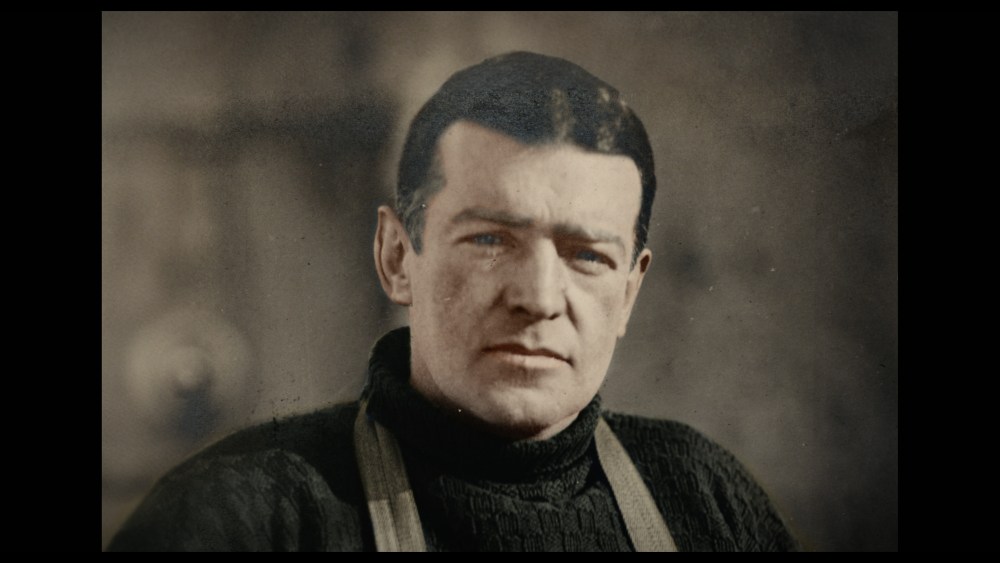Shackleton’s Voyage to the Icy Bottom of the Earth
The fabled expedition of Ernest Shackleton, the Anglo-Irish explorer who led 27 men on a voyage to Antarctica in 1914 aboard the three-masted barquentine schooner Endurance, only to see his ship sink and to spend the next 500 days trying to survive and get back to civilization, sounds like something you read about in history books — or maybe a storybook. It’s a saga so removed from our time, so rooted in a pre-technological world, that the idea that you could actually see it as it’s happening seems wondrous.
Yet Shackleton, who had an early 20th-century showman’s flair for publicity, took a filmmaker along with him as part of the crew — the photographer and cinematographer Frank Hurley, who shot the whole journey. So even as Shackleton and his men were stranded at the bottom of the earth, trapped in an endless stretching expanse of pack ice, their daily routines, their research, the entire frozen-in-time ordeal was being photographed and recorded.
The voyage of the Titanic took place in 1912, two years before Shackleton’s expedition, and just imagine if the fate of the Titanic had been caught on film, the footage preserved under the ocean and then recovered. It would feel like you were bearing witness to the uncanny. The footage of Shackleton and his men conjures a touch of that level of awe. It’s transporting, like a time machine. I first encountered this footage — and, indeed, the entire saga — when I saw “The Endurance: Shackleton’s Legendary Antarctic Expedition,” the stunning 2001 documentary about it. That movie, in its way, cast an aesthetic maritime spell.
“Endurance,” the new NatGeo documentary about Shackleton’s journey, is very good, but its tone is less poetic, more scientific. The film crosscuts between two journeys: the Shackleton expedition (which it shows us in extraordinary detail) and the attempt in 2022 by a team of researchers, led by the venerable maritime archaeologist Mensun Bound, to retrace Shackleton’s journey and locate the sunken carcass of his ship, 3,000 meters below the surface. (They ultimately found it.)
The wreck of the Titanic was discovered in 1985. After that, locating the wreck of Endurance had become the Holy Grail of undersea historical treasure hunts. In paralleling that quest with Shackleton’s own, “Endurance” creates a bit of a glib equation (as if the journeys were remotely equivalent!). Yet the film becomes a meditation on the meaning of two ages: one rooted in the mores of the 19th century — in faith and wonder, in man facing off against the elements — the other guided, and protected, by technology. One era feels religious, the other secular. I wish I could say that the crosscutting elevated the film’s suspense (it doesn’t), but it’s gratifying to see the stories meet in the middle.
Directed by Elizabeth Chai Vasarhelyi, Jimmy Chin, and Natalie Hewitt, “Endurance” is a rigorous documentary adventure film. It draws on the letters and diaries of Shackleton and his men; at one point, Shackleton wrote his wife and said that he could hardly describe the excitement of exploring places and things that no human being had ever seen before. That was the primal lure of Shackleton’s expedition — his fourth attempt to reach Antarctica. And he never did reach it. When he and his team set sail from South Georgia, the whalers there warned them to postpone the trip, saying that the conditions would be too forbidding. But Shackleton, always desperate for funding, felt he couldn’t turn back. After six months, he and the crew were caught in the icy Weddell Sea, and the ship soon went down.
The men we see in the old footage look oddly becalmed. They had supplies, and lifeboats, which when stowed with gear weighed a ton apiece; the men had to haul those boats over the ice. Later, after they’ve washed up on Elephant Island and are at the end of their tether, Shackleton takes five men in a whale boat to sail the 800 treacherous ocean miles to South Georgia, a land mass they then have to walk across, scaling mountains and traversing icy chasms. You feel the beyond-harsh extremity of it. (This is what faith looks like.)
The movie uses enhancements like colorization and sound effects, the sort of thing I was against until I saw Peter Jackson’s revelatory World War I documentary “They Shall Not Grow Old.” The century-old silent footage in “Endurance” has been revamped with a respect for its verisimilitude. I do wish, though, that the movie hadn’t mixed in re-enactments. It’s better to let us imagine what we can’t see. But what we do see in “Endurance” is quietly staggering.


